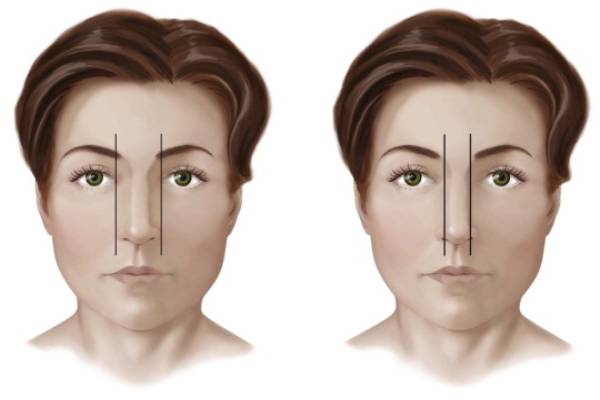Table of Contents
The dropped tip is a name used for noses that are tilted or stretched downwards, similar to the noses used to describe wizards. Also called ptosis, the tip of the nose is caused by a lack of structure in the tip of the nose. Structure refers to the part that supports the tip of the nose. Poor structural support can be the result of trauma, genetic or ageing factors.
The dropped tip can also be due to a large or elongated bridge or nasal septum, or due to a strong muscle above the upper lip that pulls the tip of the nose down. Everyone’s nose has different angles. In some racial groups, the nose is naturally lower than in others. People in Mediterranean countries are often genetically predisposed to other parts of Europe.
Some people’s noses only fall out when they smile. This can be caused by strong muscles between the base of the nose and the upper lip. It can also be caused by the activity of another muscle called the mandibular muscle, which holds the nasal septum, which is located below the nose and upper lip.
Dropped tip surgery is specifically designed to raise the tip of the nose to a height that is more aesthetically pleasing. By strengthening this nose, the whole face looks improved and harmonious.

Who is a candidate for Dropped Tip Surgery
If you are not satisfied with the appearance of your nose or your nose is drooping, you can be considered a candidate for Rhinoplasty in Iran if you have the following:
- Have a good level of health
- Complete face and nose growth
- Not smoking or wanting to quit
- Have realistic expectations of surgery
Once the nose is fully developed, patients of any age can have a rhinoplasty. The dropped tip can be congenital or therefore ageing because the tip of the nose naturally begins to sag over time. This procedure can be performed as primary rhinoplasty or corrective surgery.
How to measure the rotation of the tip of the nose
Keep in mind that the rotation of the tip of the nose indicates that the tip of the nose is pointing upwards, increasing the angle between the upper lip and the lower edge of the nose. Decreasing this angle causes the tip of the nose to drop. If your nose is drooping and you want to correct it, the first step after contacting your surgeon and counsellor is to measure the rotation of your nose.
The surgeon first measures the angle of the nose, that is, the angle between the lower edge of the nose and the upper lip. The range of optimal angles varies between men and women. The right angle for men is between 90 and 100 degrees, while the slightly higher tip gives a better look for women, which is between 95 and 108 degrees.
The surgeon always diagnoses the tip of the nose by measuring the angle of the nose before corrective surgery. Measuring the angle after surgery and comparing it with before rhinoplasty confirms the successful rotation of the tip of the nose.
How To Rotate The Tip Of The Nose
In order to correct the tip of the tip of the nose, the surgeon does what is called the rotation of the tip of the nose and adjusts the angle of the nose to the desired level. There are several ways to rotate your nose through rhinoplasty.
Through rhinoplasty, the surgeon can use several surgical techniques to rotate or elevate the tip of the nose. Surgeons often use open rhinoplasty for this procedure, which is the opposite of closed rhinoplasty. Open Rhinoplasties have incisions in the inside of the nose as well as the outside of the nose along the lower edge.
Surgical solutions for dropped nasal tips include
- Remove excess cartilage from the tip of the nose
- Shortening the nasal septum
- Reduce the length of the lateral cartilage at the outer edge of each nostril, which leads to an increase in the base of the nose.
- Suture the lower lateral cartilage to raise the tip of the nose
- Increased support of the tip of the nose through the transplantation or suturing of the columella (columella is the lower edge of the nose that connects the two nostrils).
The style of rotation of the tip of the nose used by the surgeon depends entirely on each person’s nose. Some drooping noses may require more intensive corrective surgery with a combination of the above methods, while others may be easier to repair. Always consult your doctor to determine which solution best meets your nasal needs.
Now that you know some of the different ways to have rhinoplasty, be sure to ask your surgeon about your experience of correcting and raising your nose. Review photos before and after rhinoplasty to see the final results of previous nose corrections. In addition, confirm that the surgeon must have a surgical license and have a large volume of previous work samples in rhinoplasty.
Dropped tip surgery information
During the visit, the surgeon measures the angle of the nose between the upper lip and the tip of the nose. Based on the person’s desired outcome, the doctor will determine how much the tip of the nose should be raised. All rhinoplasty procedures in the operating room are performed under general anesthesia.
On the same day after the operation, the patients can be discharged from the hospital and return home. Depending on the unique characteristics of each patient, the surgeon may use an open or closed method to correct the dropped tip. After proper incision, cartilage grafts are used from inside the ear or rib to add support to the tip of the nose.
Suspension suspensions may also be used. In the case of rhinoplasty corrective surgery, lateral graft grafts and septal grafts may be used to raise the tip and increase the structure to remove the sagging of the tip.
Why should I do dropped tip surgery?
Raising the tip of the nose causes sagging, creates symmetry and harmony in the face, and attracts people’s attention. But while there are many aesthetic benefits to rhinoplasty, there are benefits to rhinoplasty. Severe sagging of the tip of the nose can be the cause of respiratory problems.
A simple and easy test that can be done is to push the tip of your nose upwards with your hand and see if your breathing improves. If you do this and get better results, you may be considered a candidate for rhinoplasty. If you are interested in rhinoplasty, see a specialist and get the information you need.
What are the risks in relieving a drooping nose?
The risks associated with relieving a drooping nose, like all standard rhinoplasty risks, include bleeding, infection, and scarring. The specific risk of this type of rhinoplasty is the possibility of movement of the tip of the nose. When the tip of the nose attaches to the septum, over time, any movement in the septum caused by trauma or ageing moves the tip of the nose.
The tip of the nose may feel a little stiffer than usual after this type of rhinoplasty because it has more support than before. There is also a risk that the ligaments that hold the tip in place will weaken, which may increase slightly over the years.
Does our nose droop as we age?
As you age, your skin becomes thinner. In addition, over time, the nose weakens and its supporting structures lose their properties. This can cause the tip of the nose to sag. In this way, the nose is seen longer due to changes in cartilage. People with thinner skin may notice these changes in their 20s.
The final point
Improving the sagging of the tip of the nose is one of the most common goals of rhinoplasty after removing the bulge and correcting the fleshy noses. Rhinoplasty techniques have progressed well. That’s why today, results are generally more predictable and stable. To ensure that the results are optimal and lasting, be sure to see a surgeon with sufficient experience in rhinoplasty. To do this, consult the experts of MOJ ARAMESH AMITIS Company.





